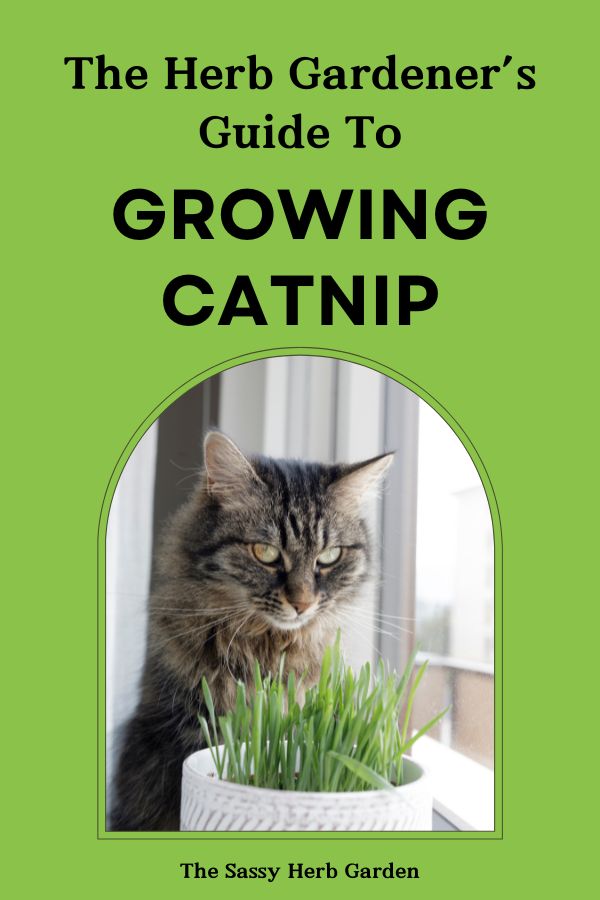Hold onto your scratching post because we’re about to dive headfirst into the world of growing catnip! I assure you that you’ll find catnip easy to grow, both indoors and outdoors. In this comprehensive guide, you’ll learn everything you need to know about how to grow catnip. We’ll also share other surprising uses for catnip beyond a special treat for your feline friends.
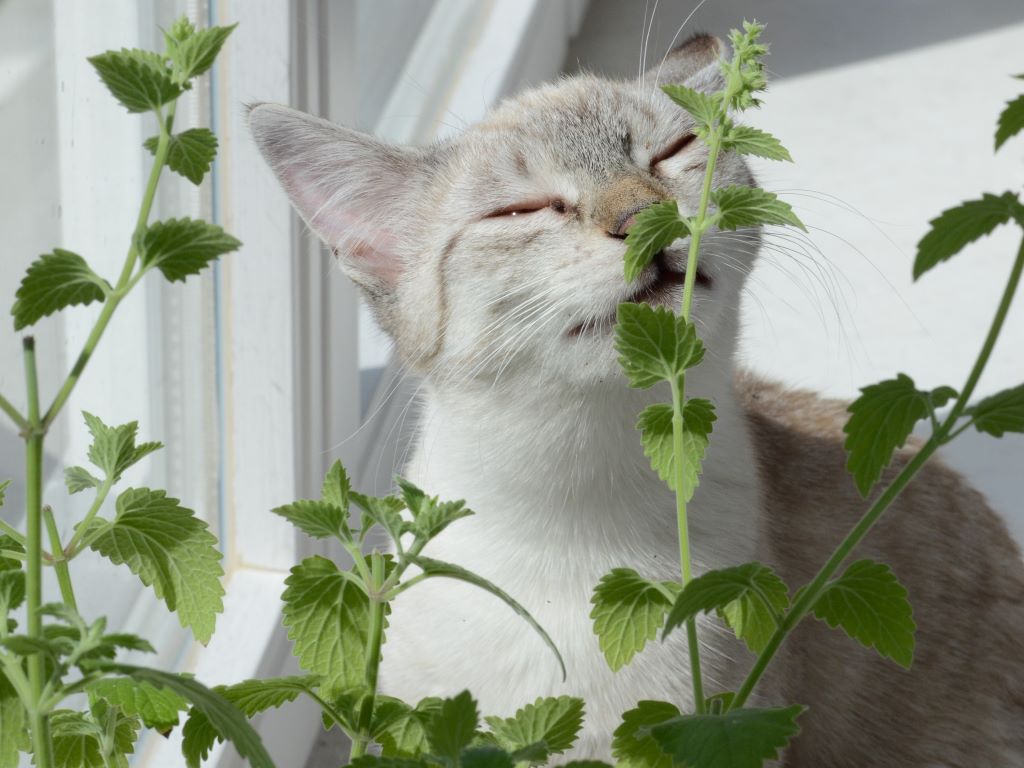
Whether you’re a devoted cat parent or simply curious about this herb that drives our furry friends wild, you’ve come to the right place. Catnip is easy to grow. It is extremely patient with adverse growing conditions like drought and poor soil. And with plenty of sunshine, you can have an abundance of catnip in your garden. Let’s take a look at a few ways you can use all the catnip you’ve grown!
- Catnip is famous for the effect it has on cats. Most cats react to the odor of catnip by licking and rubbing on catnip toys. They love to roll in the herb. It’s a safe and natural way to stimulate your feline friend to get more exercise by chasing toys laced with catnip.
- For some cats, chewing on catnip causes a calming, sedative response. For these felines, the taste of catnip has the opposite effect of the odor.
- Gardeners often grow catnip to help redirect roaming cats away from other plants in the garden. Or they might plant it to attract cats who will help keep rodents out of the garden.
- Humans can also enjoy catnip’s benefits through catnip tea. The tea is made from the dried leaves and flowers of the catnip plant and is known to have calming and sedative effects that can help with anxiety and stress. And while WebMD points out there haven’t been many studies on catnip in humans, they share that catnip has a long history of being used for a variety of medicinal purposes such as helping with insomnia, stomach problems, relieving colic and a variety of other issues.
- Dried catnip sprigs are also an effective insect repellent, especially against mosquitoes.
Note that catnip is generally safe for humans and pets, but like any herb or supplement, it’s important to consult a healthcare professional before using it for any medicinal purposes. Always be aware of any allergies or potential interactions with other medications.
This article may contain affiliate links to products that we mention, if you buy something through one of those links we may earn a small commission at no extra charge to you.
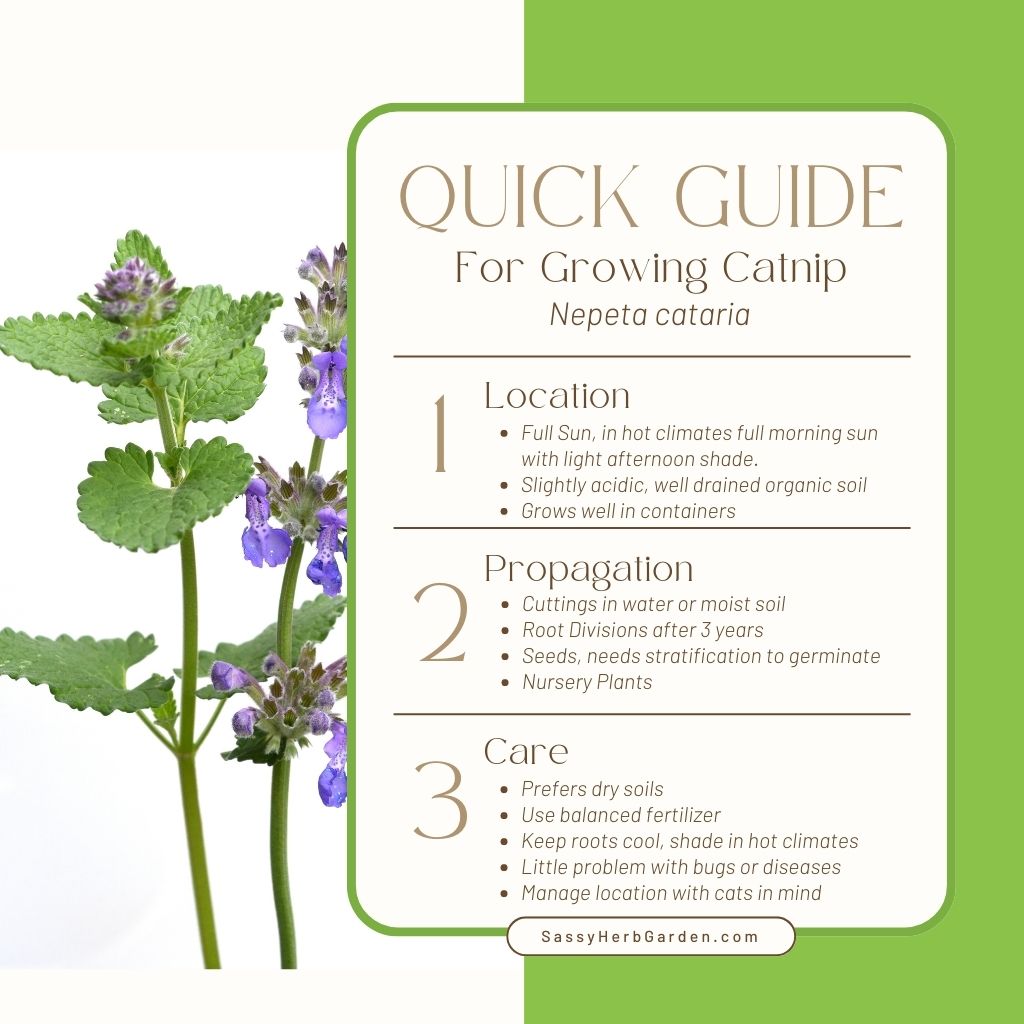
Getting Started with Growing Catnip
Nepeta cataria Overview
I think you’ll enjoy growing catnip for the abundance of deep green heart-shaped leaves that create 2-3 foot tall mounds in the garden. The white and purple flowers on catnip plants aren’t particularly showy so you’ll find catnip better as a backdrop for other colorful perennials. As with all plants in the mint family you need to manage the space where catnip is grown so it doesn’t take over your garden.
Catnip, scientifically known as Nepeta cataria, is a herb grown throughout Europe, Asia and North America. It’s an easy-to-grow plant in the mint family, Lamiaceae, thriving in USDA hardiness zones 3-9. It does well in a sunny garden but can tolerate partial shade. While it prefers a well-drained soil, it will grow in almost any type of soil except swampy areas. It also readily adapts to growing in pots.
While famous for driving cats a little bit crazy, catnip has a variety of uses for humans as well. Catnip can be grown to be used in culinary recipes, therapeutic teas, and even as a natural insect repellent.
Catnip vs. Catmint
Although the terms catnip and catmint are often used interchangeably, they are different plants. The confusion is because they are both in the Nepeta genus, with similar leaves and growing needs. Catnip (Nepeta cataria) is the one that cats love the most, while catmint (Nepeta spp.) usually doesn’t affect cats.
However, gardeners often love to plant catmint instead because its flowers are considerably more ornamental. If you prefer to grow the more showy Catmint, this same growing guide applies.
How to Grow Catnip
Catnip is a herb that propagates easily. You can start growing catnip from seed, cuttings, or plant divisions. Or if you are in a hurry you can find catnip plants in your local garden center.
How to Grow Catnip from Seeds
When you purchase your catnip seeds make sure the package states the seeds are Nepeta cataria, as many retailers also sell Cat Grasses and Catmint.

Plan to start growing catnip from seeds about 10 weeks before the last frost in the spring. Here are the steps:
- Stratification: You’ll get a much better germination rate if you cold-stratify the catnip seeds before planting. Stratifying sends a signal to the seeds that winter is over and it’s time to start growing. Place the seeds in a damp paper towel, sealing them in a plastic bag, and storing them in the refrigerator for at least 4 weeks.
- Prepare the seed-starting mix: Fill small pots or seed trays with a fine seed-starting soil mix.
- Plant the seeds: Sow the seeds in the prepared containers. Lightly cover the seeds with 1/8 inch of moist soil.
- Water and maintain: Keep the soil moist, but not soggy, as too much moisture can cause root rot. Seeds should sprout within 2-3 weeks.
- Transplant sprouts outdoors: Once the danger of frost has passed in the spring transplant your sprouts into your garden or larger pots, spacing them 12-18 inches apart.
Propagating Catnip Using Cuttings
Since catnip is a herb that produces abundant foliage in the garden, you can take a few cuttings and start new plants with very little effort.
- Select healthy stems: Choose vigorous, healthy stems from an existing catnip plant. Ideally, the cuttings should be around 4-5 inches long and have at least two sets of leaves.
- Prepare the cuttings: Remove the lower set of leaves. Optionally you can dip the cut end in rooting hormone powder to help stimulate root development but you’ll usually have good luck rooting catnip cuttings without.
- Plant the cuttings: Fill small pots with damp, well-draining potting mix and insert the cuttings about an inch deep. Alternately catnip cuttings will root easily in water. Make sure the nodes where you removed the bottom leaves are in the soil or under water.
- Cover and maintain: Keep the cuttings in a bright space, but away from direct sunlight. To help keep the soil moist, you can create a makeshift mini greenhouse by draping plastic over the top of the cuttings. Make sure you have plenty of openings for air movement though so the plants and soil can breathe.
- Monitor for root development: In approximately 3-4 weeks, the cuttings should develop roots and start showing new growth. At this point, you can remove the plastic cover.
Dividing Established Catnip Plants
Once catnip plants are at least 3 years old, you can divide the plant into 2-3 clumps to create new plants in your garden. Best of all it’s good for the plants to be divided because it avoids the roots from becoming too restricted. Here are a couple of tips to manage those older plants.
- Choose the right time: The best time for transplanting or dividing catnip is during the spring or fall, avoiding hot or freezing temperatures.
- Prepare the planting site: Select a location in your garden for your new clumps of catnip plants with well-drained soil and plenty of sunlight. Prepare the soil by loosening it and adding compost if needed, especially in poor soil conditions.
- Dividing: Dig up your catnip plant, making a root ball about 18″ in diameter and 12″ deep. Carefully lift your catnip plant keeping the root system as intact as possible. Cut through the root ball to divide it into 2-3 segments. I like to use a sharp spade to make a clean cut.
- Replanting: Plant each division in a new location or pot.
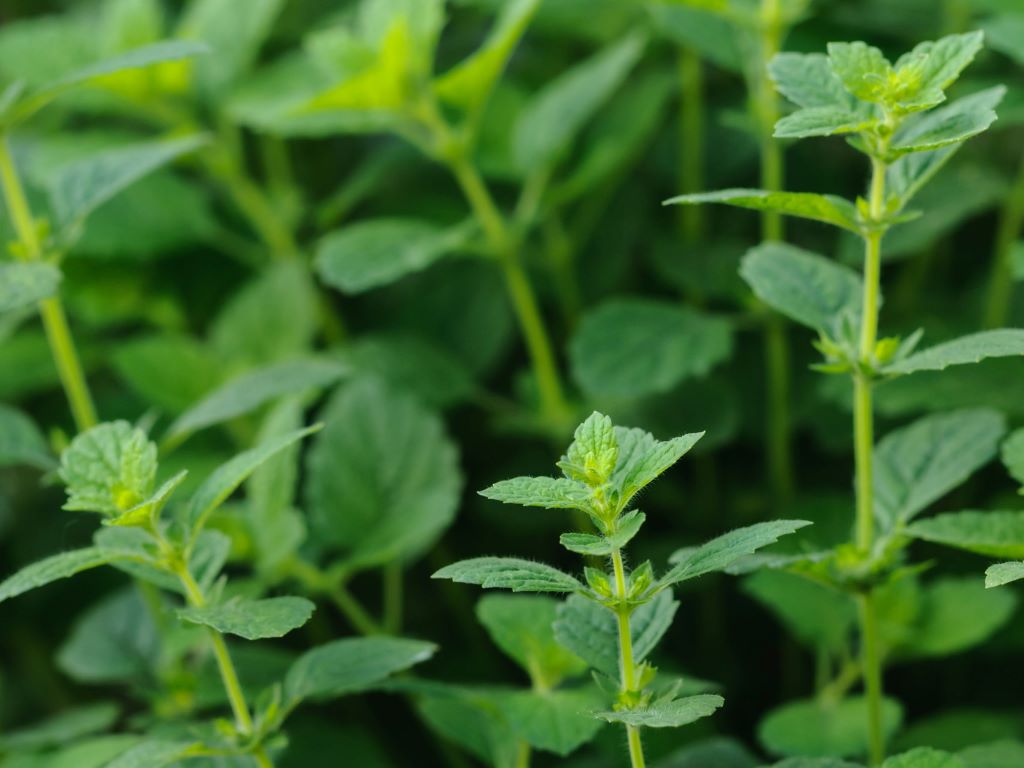
Ideal Growing Conditions for Catnip
Best Location to Grow Catnip
Without a doubt, catnip plants growing in your garden will attract cats. It’s likely your neighbor’s cat and the local feral cat will find their way into your yard too. So when planning where to plant your catnip look for a space where visiting cats won’t do damage to other plants in your herb garden. I prefer a location on the edge of the garden where other plants will be safe from enthusiastic visitors.
If you are growing catnip for other uses and would prefer kitties stay off the plants, you’ll need to take a bit more aggressive actions like covering the plants with chicken wire or netting or staking around the plants.
Catnip can be a helper plant. It will attract bees and other pollinators to your garden if allowed to flower.
Soil Requirements
I’ve found that catnip will grow in some of the worst soils as long as they drain well. However, to grow truly healthy catnip plants, choose well-drained soil with a pH level between 6.0 and 7.5. Adding a lot of organic matter will help improve drainage and keep your catnip plants happier.
Best Light for Growing Catnip
Catnip loves growing in the sunshine, preferably at least 6 hours of direct sunlight per day. And if growing your catnip indoors, opt for a sunny window that offers ample light throughout the day.
Even though catnip loves sunshine, it doesn’t like extreme temperatures. So if you live in a hot climate the best spot for catnip will have direct sunlight in the cooler morning hours and afternoon shade to protect it from extreme heat. I have listed catnip as a shade-tolerant herb, but need to make a note for you that it still needs a lot of light. If planting catnip in the shade you are looking for bright filtered light.
Watering and Humidity
Catnip plants prefer slightly dry conditions. Water your plants only when the top of the soil feels dry to the touch. Overwatering could lead to root rot or other health issues for your catnip. When growing indoors, make sure the environment isn’t too humid, as catnip thrives in average household humidity levels.
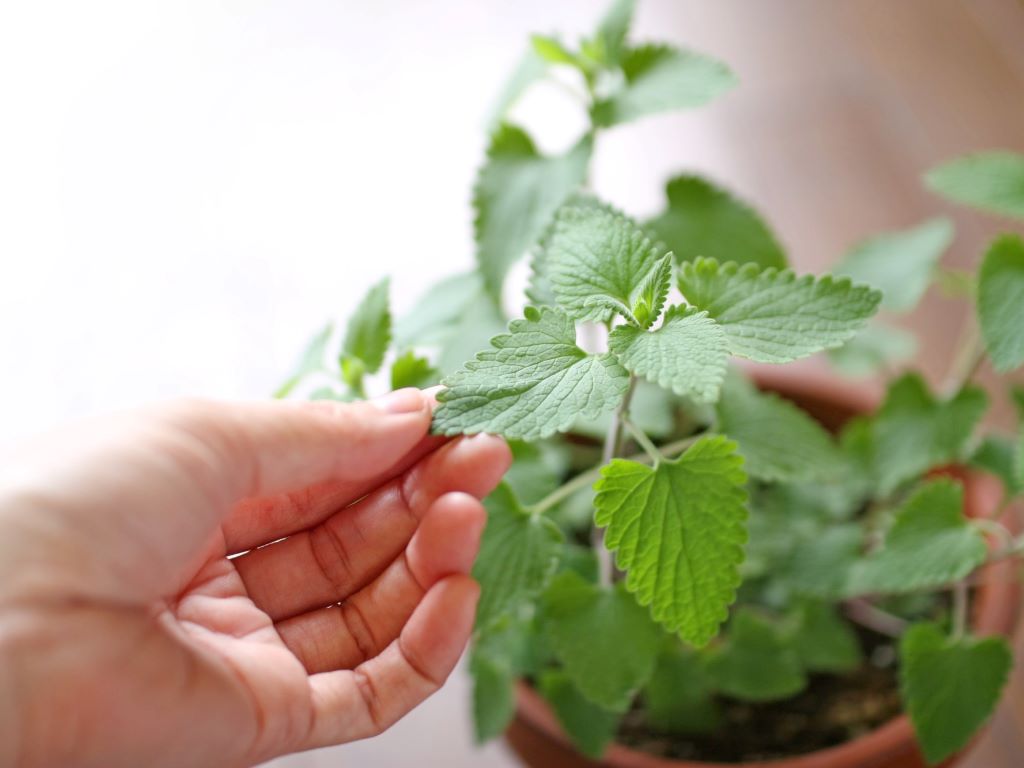
How to Grow Catnip in Containers
Growing catnip in containers is a practical and easy way to cultivate this delightful herb that your feline friends adore. In this section, we’ll explore the best practices for pot selection, repotting, and container care to ensure a healthy and thriving catnip plant.
Pot Selection for Growing Catnip
If growing catnip inside, select a pot that is at least 8 inches wide by 8 inches deep. This will provide ample space for the roots to grow and ensure proper drainage. For container growing on your patio or balcony where it will be warmer in the summer, a larger pot is better. It’s critical that you choose a pot with drainage holes to prevent waterlogging, which can lead to root rot.
Repotting
Repotting this herb is essential for its continued growth and health. As catnip matures its roots can become crowded. Crowded roots make it hard for catnip to take up water and nutrients and can cause a plant to become spindly. Either transfer the plant to a larger pot or divide the plant (as described under propagation above) every 2 years.
To repot, gently remove the plant from its current container, taking care not to damage the roots. Then, prepare a new pot filled with a well-draining potting soil mix, making sure it has adequate drainage holes. Place the catnip plant into the new pot and fill in the remaining space with potting soil, firming it around the base of the plant. Finally, water the newly repotted catnip thoroughly to help it settle into its new home.
Care and Maintenance
When planning how to grow catnip in your garden, keep in mind that it is a herb that doesn’t require a lot of maintenance.
Feeding and Fertilizing Catnip
Catnip can pull most of its needed nutrients from the soil if you have done a good job mixing in plenty of organic matter. However, occasional feeding can be beneficial for its growth. If you are growing the plant in a pot, use a balanced liquid fertilizer once a month during the growing season. Remember not to over-fertilize, as too much may lead to weak growth.
Pruning
Pruning catnip is essential to promote bushy growth and support the plant’s overall health. Regularly remove dead or yellow leaves to encourage new growth. Pinch back the tips of the plant during the growing season to encourage branching.
Preventing Catnip from Becoming Invasive
Healthy catnip plants will spread through runners, just as other plants in the mint family. When you are working in your garden, pull the runners and discard them to avoid your catnip from spreading where you don’t want it to be.
A great solution to control invasive herbs, like mints, is to cut the bottom out of a large nursery pot. Sink that pot into the ground, leaving a 1-2 inch lip above the ground. Then plant inside the pot. The walls will keep the runners from spreading while the bottomless pot will still allow for good water drainage.
Overwintering Catnip in Your Garden
After a hard fall frost, trip your catnip down to a few inches above the ground. Then add a layer of mulch to protect the roots from frost heaving over the winter. Catnip is a very hardy perennial as far North as USDA zone 3 and will start growing on its own in the spring.
Preventing Pests and Diseases
Catnip is generally hardy and resistant to most pests and diseases, but some issues can still arise.
- Keep an eye out for common pests like aphids, which can be removed by spraying the plants with a strong jet of water. If the aphid infestation persists, consider using a natural insecticidal soap to combat them.
- Powdery Mildew will occasionally be found on catnip. To control, clean up debris around the plants and thin out to improve air movement. Unless it is excessive you don’t need to spray with a fungicide as catnip is fairly resistant.
To prevent diseases, make sure your catnip is planted in well-draining soil and avoid over-watering, as overly wet conditions can lead to root rot. If you’re growing catnip in pots, make sure to clean the pots before planting to eliminate any potential sources of disease.
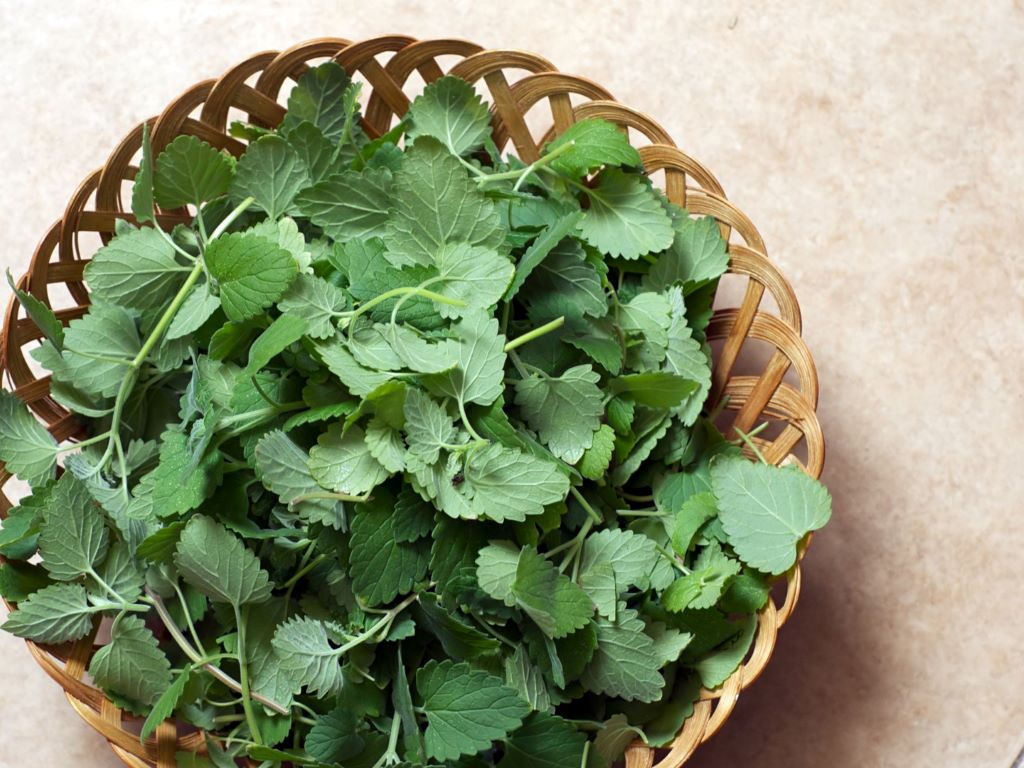
Harvesting and Storing
When and How to Harvest
Catnip is ready to harvest anytime after they reach 8 inches tall. They benefit from regular pruning so harvest as frequently as you want to ensure a bountiful supply throughout the year. To harvest, simply pinch where the leaf connects to the stem and gently pull it off the plant. For bigger harvests, use pruning shears to snip off whole stems.
How to Dry Catnip
After harvesting, preserve your catnip by air-drying. Although you can use other drying methods, catnip retains its oils and fragrance best when air-dried. To air-dry, bundle the stems together, tie them with a string, and hang them in a well-ventilated, dry area away from direct sunlight. In 1-2 weeks, the leaves should be dry and ready for storage.
Storing in the Freezer
Freezing your catnip after drying is a great way to retain its potency. Store the leaves either whole or crushed in a sealed, airtight container. Don’t forget to label the container with the date. Dried catnip can last several months to a year when stored in the freezer.
Creating a Cat-Friendly Garden
How does catnip affect your cat?
Nepetalactone, the essential oil in catnip, is really an oddity. According to the Humane Society, if the fragrance is smelled by cats it can turn them into crazy creatures for about 10 minutes. It’s kitty gone wild. However, if consumed it has the opposite effect and relaxes a cat.
But have you ever seen a cat that totally ignores catnip? That’s because about 1/2 of cats aren’t receptive to the influence of catnip. They don’t have the genetic makeup to react. Also, kittens tend to not show an interest in catnip until about 6 months old. Let me add a word of caution here, if you don’t know how your cat will react it’s best to expose them to catnip in small increments. And as always, discuss with your vet before giving your cat a dose of catnip.
Other Herbs Cats will Love
While catnip is the star of a cat-friendly garden, you can enhance the space by adding other plants that attract felines and provide additional benefits. Some of these options include:
- Lemongrass: An aromatic herb with a lemony scent, lemongrass is attractive to cats and can also be used in your kitchen. Plant it in well-draining soil with full sun.
- Valerian: Valerian plants are known for their calming effect on both cats and humans. Plant it in well-draining soil in full sun or partial shade.
- Mints: This family of fragrant herbs entices cats and is a versatile addition to your garden. Be cautious, as any plant in the mint family can spread quickly, just like catnip. Plant it in well-draining soil with full sun to partial shade.
A cat-friendly garden can also help support native pollinators by providing habitat and food sources. Take the time to thoughtfully plan your garden bed and choose plants that fit your climate and your cat’s preferences.
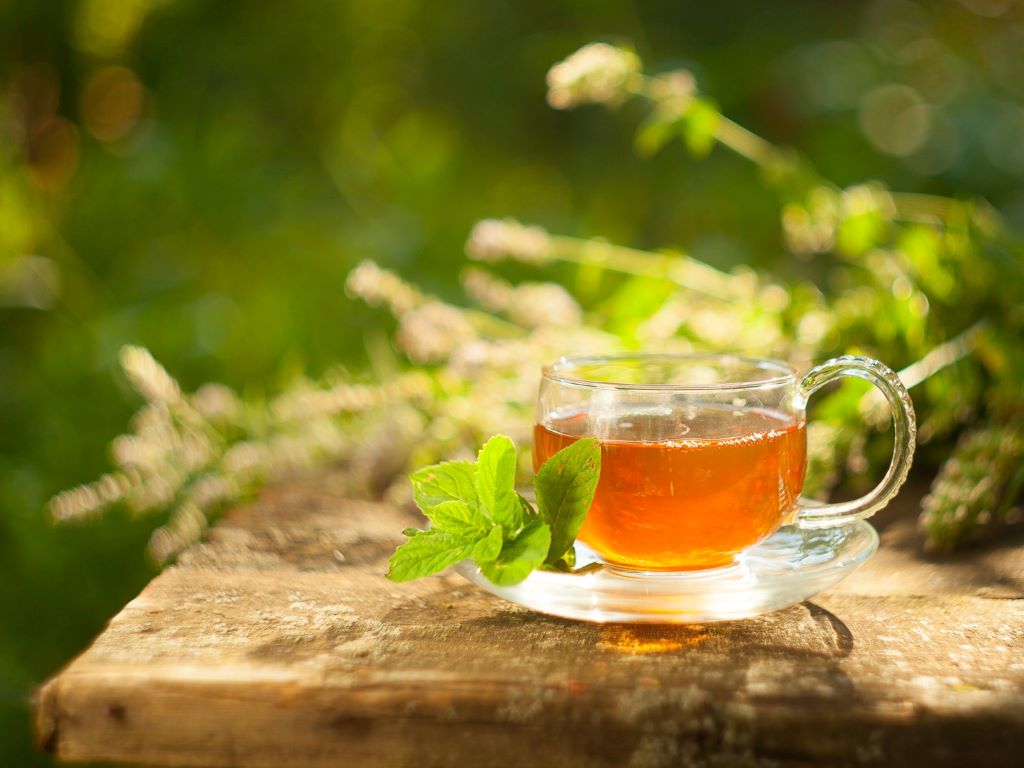
Catnip as a Herb for Humans
With all this talk about kitties enjoying catnip, we often lose track of the possible benefits of catnip to humans. If consumed, catnip is believed to have a relaxing impact on people. Here’s a recipe for catnip tea from Healthline.
Historically catnip has been used to treat digestive issues like intestinal cramps and indigestion. It is believed to induce menstruation, to work as a sedative, and to increase appetite. However, because very little research has been done on human consumption of catnip, it’s important that you get medical advice before ingesting.
We love catnip for it’s pest repellent characteristics. It’s a great herb for keeping away pesky mosquitoes on a hot summer night.
Frequently Asked Questions
Catnip thrives when grown both indoors and outdoors. For indoor growth, place your catnip plant on a sunny windowsill and make sure to provide it with enough water. When growing outdoors, catnip likes a sunny or lightly shaded spot in the garden.
Catnip requires moderate watering. However avoid overwatering, as this can lead to root rot. Keep the soil consistently moist, but not waterlogged
Catnip can spread easily through self-seeding if not properly maintained. To control the spread, be sure to remove flower heads before they set seed.
The best time to harvest catnip is just before it flowers when the plant’s essential oils are at their peak. You can continue to harvest the leaves throughout the growing season, but remember to leave enough foliage for the plant to thrive.
A Few Last Thoughts on How to Grow Catnip
Discovering how to grow catnip in your garden is a treat for you and your feline friends. By following these simple steps and tips we’ve covered in this blog post, you can have a catnip haven right in your backyard. Remember to choose a sunny spot with well-drained soil and provide regular water and care. Before you know it, you’ll have a lush and aromatic patch of catnip, ready to be enjoyed by your curious kitties.
Not only does catnip offer endless entertainment for your cats, but it also has benefits for you. Harvesting catnip leaves to make homemade teas or using them in your culinary creations can add a touch of relaxation and flavor to your life. Plus, catnip’s natural pest-repellent properties make it an excellent addition to any garden, keeping unwanted critters at bay.
So, why wait? Grab your gardening gloves, gather your catnip seeds or seedlings, and embark on this delightful journey. Your garden will come alive with the vibrant green foliage of catnip.
Happy gardening, and happy catnip adventures!
